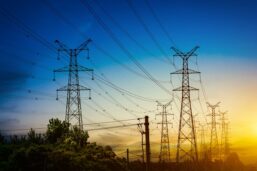
India has Potential to Become Global Leader for Distributed Standalone Solar Solns
India with its huge local market and strong manufacturing capabilities also has the potential to become the global market leader for distributed stand-alone solar solutions by leading the way in technology as well as business innovations in the sector. There is also massive potential for local manufacturing and exporting to the rest of the world, believes Viraj Gada, IDEF Spokesperson & India Regional Representative, GOGLA, a global association for the off-grid solar energy industry and India Distributed Energy Forum and Expo (IDEF) is organized by GOGLA along with International Finance Corporation’s Lighting Asia/ India program and Ashden India Collective to chart the business-driven route for the distributed standalone solar products in India. In conversation with Manu Tayal, Sub Editor, Saur Energy International, Gada shared his views on various topics. Following are the excerpts from that exclusive interview.
Q. Kindly tell our readers more about GOGLA’s efforts towards scaling the off-grid electrification market in India.

Viraj Gada, IDEF Spokesperson & India Regional Representative, GOGLA
GOGLA enhanced its India activities via an India Regional Representative in August 2017. Since then as part of our global strategy of working with national associations in each country, we have been working closely with CLEAN – a national renewable energy association in India to share our global expertise and strengthen CLEAN to effectively represent the distributed renewable energy sector in general and distributed stand-alone solar energy sector in particular.
GOGLA initiated an India Working Group for distributed stand-alone solar energy companies to provide a platform for knowledge and information exchange within the private sector and to create a consensus on key issues affecting the sector which could in turn be taken up by GOGLA with the Indian government on behalf of the sector. Some of the key issues discussed and taken up have been the recent import duty on solar panels, import rules for solar components and BIS standards for solar lanterns.
IDEF is also an initiative by GOGLA along with its co-organizers – International Finance Corporation’s Lighting Asia/ India and Ashden India Collective to organize for the first time in India, a focused and targeted event for the distributed stand-alone solar energy sector. The event provides an opportunity to innovative companies in the sector to showcase their products and services to all important stakeholders.
Q. Why you have chosen India? What scope do you see here?
India is the single largest country market for the distributed stand-alone solar energy sector in the world and contributes to 1/3rd of the global market for the sector. As per GOGLA’s latest (Jan-Jun 2018) Global Semi-Annual Sales and Impact Data report 1.33 million products were sold in India in the first half of 2018 (as reported by GOGLA members).
According to a recent GOGLA supported study, the current annual value of product of the distributed stand-alone solar products sector is INR 38,594 million (USD 576 million). This includes both government driven (subsidy based) sales and private sales. The private driven segment is INR 6,839million (USD 102 million) and is expected to grow at a rate of 8% over the next 5 years and has a potential to have an accelerated growth of 17% per annum. The value of this segment alone is 0.5% of the Indian consumer durable market.
Q. In your view, how much is the potential of solar energy in India?
The National Institute of Solar Energy in India (pdf) has determined the country’s solar power potential at about 750 GW, a recently released document by the Ministry of New & Renewable Energy (MNRE) shows. India’s current solar power installed capacity is around 3 GW, or less than 0.5% of the estimated potential. Naturally there exists a massive opportunity to tap this potential. The Government has upscaled the target of renewable energy capacity to 175 GW by the year 2022 which includes 100 GW from solar. Q Do you see any bottlenecks in the renewable energy space with respect to India?
Some of the challenges for the renewable energy space; specifically, for the distributed stand-alone solar solutions are as follows:
- Lack of adequate awareness for renewable energy among policymakers as well as consumers
- Preference given only to the cost (and not the environmental factors) by Indian consumers
- More Government focus on traditional means of generation backed by heavy subsidies, in turn, shifting the scales towards non-renewable sources of energy
- Non-supportive taxation via import duties and GST which could have otherwise given a strong boost to stand-alone solar solutions
- Lack of globally harmonized standards and checks – leading to infiltration of low quality products in the market, in turn resulting in negative perception of solar solutions in general in the minds of users
Q. How do you see the future of distributed solar market in India and what role can private sector play in it?
India with its huge population and diverse geography needs a multitude of solutions to enable reliable, modern, universal energy access for all its citizens. Distributed stand-alone solar solutions are perfectly placed in aiding the Government of India’s efforts in providing 24 X 7 quality energy access to all which was also seen in Government’s “Saubhagya” scheme where solar home systems were considered as a viable solution for providing energy access to remote households.
Distributed stand-alone solar solutions can also play a big role in providing back-up to the main grid which currently is facing transition and distribution losses of more than 30% resulting into power cuts. The growing aspirations of consumers require innovative, decentralized, efficient solutions which can provide on-demand energy access. Apart from household level energy access, distributed stand-alone solar solutions would also play a big role in supporting productive use applications through efficient appliances including solar pumps for agriculture, other solar-powered agri-processing machines, solar freezers for refrigeration of produce, etc.
India with its huge local market and strong manufacturing capabilities also has the potential to become the global market leader for distributed stand-alone solar solutions by leading the way in technology as well as business innovations in the sector. There is also massive potential for local manufacturing and exporting to the rest of the world.
According to a recent GOGLA supported study, the current annual value of product of the distributed stand-alone solar products sector is INR 38,594 million (USD 576 million). This includes both government driven (subsidy based) sales and private sales. The private driven segment is INR 6,839 million (USD 102 million) and is expected to grow to at a rate of 8% over the next 5 years and has a potential to have an accelerated growth of 17% per annum. The value of this segment alone is 0.5% of the Indian consumer durable market.
India and France came together at the UN Climate Change Conference in Paris (November 2015) to launch the International Solar Alliance (ISA). It has evolved into a coalition of 121 countries and aims to drive adoption of solar energy as well as assist its member countries in meeting their energy requirements in a clean and affordable manner. Under the ISA Framework agreement, the international body aims to achieve the following objectives through collective ambition: (a) address key risks affecting the adoption of solar energy, (b) provide affordable finance at scale, and (c) mobilize $1,000 billion of investments by 2030.
The Government of India has committed INR 1,750 million for setting up of ISA and expects the India industry players to leverage the ISA platform to engage with the global market.
Q. Are there any new policy initiatives and/or support you think should be taken by the government? Please explain.
The current government has taken several key, commendable steps in supporting solar energy in general and bringing the focus on household level electrification for the first time in several years. It has considered the role of distributed stand-alone solar solutions in its “Saubhagya” scheme, launched and led the International Solar Alliance (ISA) and provided various subsidy schemes Thus, the distributed stand-alone solarover the last decade to push for distributed standalone solar solutions.
But, distributed stand-alone solar solutions now needs to be included in the electrification policy and accepted as a mainstream energy solution as the sector has proven its impact, sustainability and reliability. Distributed stand-alone solar solutions can help and support the government’s efforts in providing viable solutions to the growing aspirations and energy needs of Indian consumers and support various heavy loads in the agricultural sector which the current weak grid might not be able to support.
Thus, the distributed stand-alone solar solutions sector needs government acceptance as a mainstream energy solution and support with regards to clear and preferred tax rates to give a boost to the entire sector by reducing overall costs. There is also a need for effective quality check and standardization to enable entry of high quality global products into India and opening the pathway for Indian manufacturers to sell their products across global markets where only global quality standards are accepted.
Q. How does GOGLA helping India in achieving its commitment towards climate change/ Sustainable Development Goal 7?
The distributed stand-alone solar solutions will help India reduce its carbon footprint by adopting renewable, sustainable and modern energy mechanisms. As per GOGLA’s latest (Jan-Jun 2018) Global Semi-Annual Sales and Impact Data report, the impact of distributed stand-alone solar solutions globally is as follows:
- 214.8 million people who have ever lived in a household with improved energy access
- 51 million metric tons of CO2 and black carbon averted due to reduction in kerosene use (in CO2e),
- $3.5 billion additional income generated
- 22.8 million kerosene lanterns no longer in use because users have replaced them with solar lighting
- $8.4 billion amount of savings on energy related expenditure
- 4.5 million people currently undertaking more economic activity
- 2.5 million people using their system to support an enterprise or income generating activities
- 2.4 million people spending more time working
While the above impact numbers are at a global level, India contributed to 1/3rd of the global sales, thus, it would be fair to attribute at least 33% of the above impact numbers to India. Thus, distributed stand-alone solar solutions help governments achieve several UN SDGs and also aid in meeting global climate commitment.
Q. How off-grid solar energy will transform the energy generation in India?
Distributed stand-alone solar solutions can also play a big role in providing back-up to the main grid which currently is facing transition and distribution losses of more than 30% resulting into power cuts. The growing aspirations of consumers require innovative, decentralized, efficient solutions which can provide on-demand energy access. Apart from household level energy access, distributed stand-alone solar solutions would also play a big role in supporting productive-use applications through efficient appliances including solar pumps for agriculture, other solar-powered agri-processing machines, solar freezers for refrigeration of produce, etc.
India with its huge local market and strong manufacturing capabilities also has the potential to become the global market leader for distributed stand-alone solar solutions by leading the way in technology as well as business innovations in the sector. There is also massive potential for local manufacturing and exporting to the rest of the world.



























